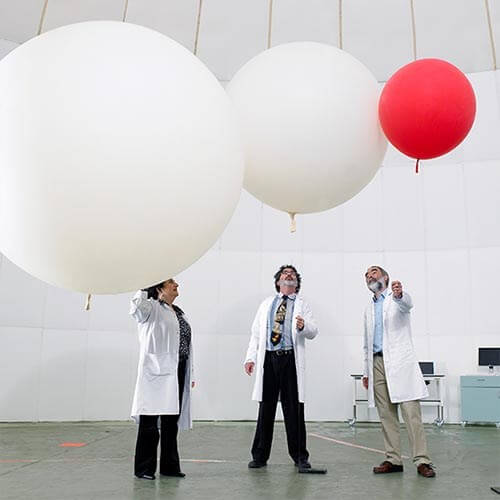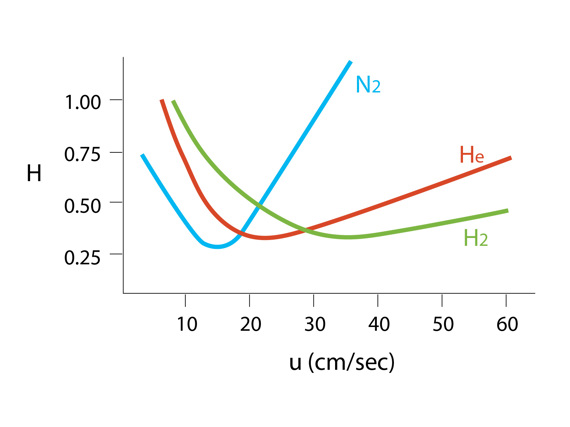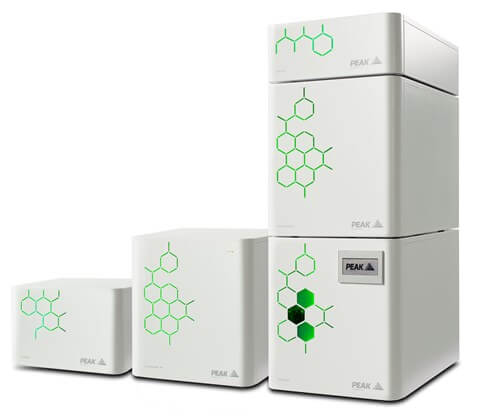Helium shortage 4.0 & the alternatives for your GC
It has only been a couple of months since the last time we wrote about the shortage of helium and now we are in the middle of yet another shortage. With a number of factors coming into play including the Amur helium plant shutting down for construction, the US Bureau of Land Management down again for unplanned maintenance in January, expectations for reduced production from Qatar, and the uncertainty of the effects of the situation in eastern Europe.
This has been an ongoing problem for many years now and, although helium is an abundant element, it is a finite resource which means the crisis will continue to escalate each year moving forward.
 Bureau of Land Management
Bureau of Land Management
The US Bureau of Land Management, the office responsible for the conservation and sale of Federally owned helium in the United States, had caused a tightening of the helium market in the second half of 2021 due to a four-month maintenance outage. The BLM is now down again, in 2022, for unplanned maintenance which seems likely to last several months. Given the BLM are responsible for supplying over 40% of domestic demand for helium in the USA, this will be particularly impactful on US labs.
Gazprom’s Amur Project
Gazprom, the largest publicly listed natural gas company in the world, based in St Petersburg, Russia, will reportedly be able to produce 60 million cubic meters of helium per year when it reaches capacity in 2025.
While the Bureau of Land Management was shut down for maintenance at the end of 2021, it was universally thought that Gazprom’s Amur project would begin supplying large quantities of helium into the market to avert another supply shortage.
It was reported in Gasworld, this was proven wrong after a few weeks of production in September 2021, when the Amur helium plant halted production to complete construction. To add to this, an explosion and a fire at the natural gas processing facility which produces the feed gas for one of Amur’s three helium plants means that Amur’s helium production will likely stop until at least quarter three of 2022.
There is some speculation around the restart of production at the Amur plant, ranging from the optimistic late Q3 2022 to the more pessimistic predictions that Amur will not be producing any helium before 2023.
Conflict in Eastern Europe
While the Russian invasion of Ukraine is not having a direct impact on helium supplies at the moment, it is thought that there could be both short and long-term effects of the conflict. In the short term, there are a number of containers in Russia and, given the suspended service to Russian ports, there is no quick way to have these exported from the country.
In the long term, there could be real political risks as well as sanctions that could be put on Russia which would make it unviable for many industries to use the helium from Russia’s Gazprom Helium Hub. While exports of natural gas and oil have not been included in the current sanctions, if severe sanctions are put on helium for an extended period, then this would hugely affect the availability of helium to the global market.
Supply Chain Disruption
The ramifications of the COVID pandemic on the supply chain are still being felt throughout the world. With an increased demand in gas, after industries started to bounce back from the initial impact of the pandemic, coupled with production sites struggling to keep up with the demand, labs can expect these disruptions to continue.
What is helium used for?
Helium is an inert gas and has many uses. From cooling superconducting magnets in MRI scanners to filling party balloons, weather balloons, and blimps.

Obviously, some of these functions have far more significance than others and it is important that unnecessary use of helium is limited and, where possible, people switch to an alternative gas that can perform the same function as helium.
Given we are in the fourth helium shortage in the space of several years, it’s crucial that we seriously consider these alternatives.
Helium gas is also commonly used in gas chromatography as a carrier gas due to its good separation results. However, there are alternatives to helium that are available to laboratories that are not finite resources, can be produced sustainably and, in many cases, offer better results.
What are the alternatives to helium?
Hydrogen has long been considered the superior carrier gas for gas chromatography. Hydrogen’s high diffusivity allows faster linear velocities and shorter analyses, but it still offers a similar separation efficiency as helium.
Nitrogen is another option for carrier gas and, as seen on the van Deemter curve, provides the best possible separation efficiency at the lowest velocity. While nitrogen does have a high separation time, compared to helium, the fact nitrogen is so abundant and easily produced makes it a viable option for many labs.

The Van Deemter Curve
Which gas generator is suitable for your GC?
PEAK Scientific has a range of gas generators that are designed, specifically, with GC in mind. The Precision range is a safe and practical way to supply hydrogen and nitrogen gas to your laboratory.
PEAK's Precision Hydrogen generator can provide standard grade purity which is suitable for Flame Ionization Detectors, while the Precision Hydrogen Trace generators are recommended for carrier gas - ensuring the lowest baseline and precision in your results.
PEAK's Precision Nitrogen generator is ideal for your GC’s make up gas and can supply multiple detectors. If you are looking for a solution that can provide make up gas or carrier gas, the Precision Nitrogen Trace is the ideal solution.

PEAK's Precision Range for GC Applications
As the Precision range is a stackable, modular design, many labs also include a Precision Zero Air generator to provide flame support gas as this does not alter the overall footprint of the stack. And, for those with no compressed air solutions in their lab, the Precision stack also comes with a Precision Air Compressor so you can have all of your GC needs met with one neat stackable solution.
With labs having to seriously consider the helium situation constantly disrupting their workflow, GC instrument manufacturers like Markes are designing instruments that can be supplied specifically by hydrogen and nitrogen rather than having to solely rely on Helium for all of their analysis.
Alongside this, many instrument manufacturers are increasingly recommending hydrogen as a carrier gas instead of helium – ultimately allowing labs to continue their analysis with no concern over gas shortages.
What are the benefits of a gas generator?
Convenience
With a gas generator, your lab will have a constant on-demand gas supply which means your lab will experience very little downtime and not have to deal with the effects of frequent gas shortages.
Safety
Unlike gas cylinders, a gas generator offers a safer alternative for your lab. By only producing gas on demand, your generator does not pose the same risks of explosion, fainting or asphyxiation should a leak occur. This is because our gas generators come with built-in safety features to minimize the risk to your personnel.
Economical
With an in-house gas generator, your lab is no longer reliant on repeated deliveries of bulk gas supplies. With the removal of recurring gas deliveries, you are no longer bound by cylinder contracts, rental charges and deliveries. Instead, with a gas generator, you can start making a return on your investment within three years.
References:
Gasworld: Helium Markets Now Experiencing Helium Shortage 4.0
Gasworld: Russian Invasion of Ukraine Will Impact Future Helium Supply
